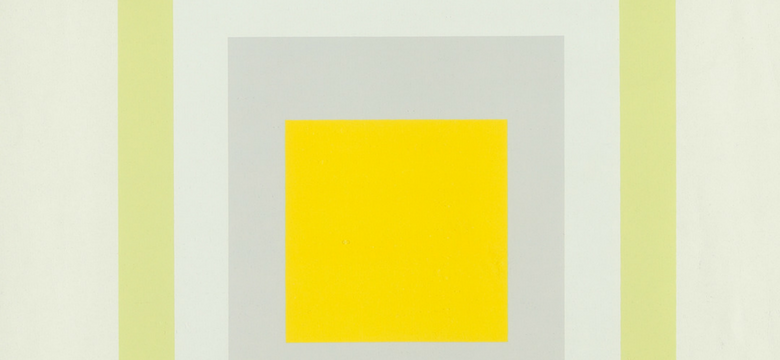Modern and contemporary art comes in many forms, and therefore appeals to people in many different ways. That variety is on full display in Heritage Auctions’ March 27 Online Prints & Multiples Auction. Two of Heritage’s experts perused the lots in the auction and selected some of their favorites:
Desiree Pakravan
Beverly Hills
Ed Ruscha’s Every Building on the Sunset Strip is one of my favorite works. It creates a dialogue between photography and the idea of a book as an artistic medium. Documenting the two-mile length of the Sunset Strip, Ruscha’s book becomes more than just a physical object; it allows one to engage with the book, to turn it upside down and to keep flipping the pages in order to see the other side of the street and its continuation. Through his documentation of L.A.’s iconic places like Chateau Marmont and Whiskey A Go Go, Ruscha creates a playful narrative for one to experience and associate his/her own memories to it. It not only embraces elements of American popular culture, but also redefines the concept of a book as a form of art.
I love Takashi Murakami’s The Pandas Say They Are Happy because it truly reflects his distinctive use of colorful anime and imagery. Murakami’s dynamic approach to pop art and Japanese visual culture has pushed him to the forefront of contemporary art. This work embodies that and more; his playful twist on traditional pop art invites the viewer to experience a surreal world.
One of my all-time favorite artists is Josef Albers. His 1962 work, Joy, from Portfolio of Homage to South, is characteristic of his iconic works that pay tribute to the simplicity of form. I admire his interplay of geometry and color, as well as his emphasis on optical effects through the use of specific colors and compositional patterns. Here, the careful use of yellow hues draws the viewers eye to the center of the composition but also creates a three-dimensional realm leaving one to play in his optic game.
Naomi Thune
Consignment Director, Beverly Hills
In 1971, American artist James Rosenquist was involved in a serious car accident. It was after this event that he began to pursue printmaking seriously. These early days of experimenting with lithographic stones and forming collaborative relationships with the master printers like Maurice Sanchez eventually evolved into the more technically and visually complex prints of the 1980s. These images from 1972 demonstrate the artist’s ability to calibrate the juxtaposition of images – in one example, roses are balanced with fonts spelling out “Sight-Seeing.” In these images, the artist asks the viewer, “what is your focus and what lies in the peripheral?”
Tube, 1972: a 313-5/8-by-30-3/4-inch lithograph in colors on wove paper that is editioned 52/75 and is signed, numbered dated and titled in pencil along the lower edge, with printer’s blondstamp
Flower Garden, 1972: a 22-by-28-5/8-inch lithograph in colors on Hodgekin handmade paper that is editioned 53/75 (along with 20 artist’s proofs) and is signed, numbered, dated and titled in pencil in the lower margin
1-2-3 Outside, 1972: a lithograph with embossing in colors on wove paper measuring 31 by 20-1/4 inches that is editioned 33/70 and is signed, numbered, dated and titled in pencil in the lower margin, with publisher’s blindstamp
Sight-Seeing, 1972: stretching 22-1/2 inches wide by 28-3/4 inches high on a 31-by-37-inch sheet, this lithograph and screenprint in colors on wove paper is editioned 65/75 (along with 20 artist’s proofs) and is signed, numbered, dated and titled in pencil in the lower margin, with publisher’s blindstamp
The friendship between Ed Ruscha and Billy Al Bengston is recorded in two collaborative books: Business Cards and Billy from 1968. Business Cards is a pictorial record of the artists designing business cards for each other. The book cover is signed by both artists above a photograph of them shaking hands and is officially stamp-dated “JAN 3 1968.” The final page displays the final product of this exercise. Ruscha’s card includes the phonetic pronunciation “REW-SHEY” below his name, and Bengston’s card has been crumpled, as a nod to his painting series Dento, and each lists his former address and five-digit phone numbers. Plus Larry Bell and Ken Price are credited as the photographers. This a great work for any fan of the Los Angeles art scene of the 1960’s. Also included in this sale by Ed Ruscha is Every Building on the Sunset Street, 1966.
Billy Al Bengston and Ed Ruscha Business Cards, 1968: an offset lithograph photobook signed by both artists in ink on the front cover
Billy Al Bengston and Ed Ruscha Billy, 1968: a paperback exhibition catalog, edition of 2,500, published by the Los Angeles County Museum of Art
Ed Ruscha Every Building on the Sunset Strip, 1966: artist’s book, edition of 1,000 that is signed, dated and dedicated in ink on the inner front cover
Visit our Modern & Contemporary Art department to view upcoming auctions and to browse our auction archives.
